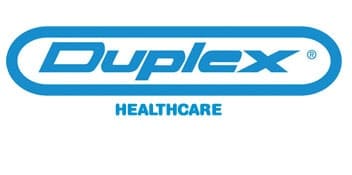FREE WHITEPAPER: Steam & Microfibre in Healthcare
In the ever-evolving landscape of healthcare, one thing remains constant – the paramount importance of control measures. Healthcare professionals, from doctors and nurses to procurement managers and medical equipment suppliers, all play a vital role in ensuring the safety of patients and staff alike. Infection control products and practices are the frontline defenders against healthcare-associated infections (HAIs), and they are instrumental in upholding the highest standards of care.
The audio version of the blog
Healthcare Australia: Protecting Lives with Infection Control Products

Image by Laura James
Understanding the Basics
The term "infection control" encompasses a range of practices and products aimed at preventing the spread of infections in healthcare settings. It includes everything from hand hygiene and personal protective equipment (PPE) to surface hygiene measures and the disinfection of shared patient care equipment.
Hand Hygiene – The First Line of Defense
Hand hygiene is the foundation of eliminating the risk of infection. Proper hand-washing with soap and water, or the use of hand sanitisers, can significantly reduce the risk of transmission of pathogens. Healthcare professionals, especially, should make this an ingrained part of their routine.
Surface Cleaning and Disinfection
Effective cleaning of surfaces and disinfection are essential in healthcare environments. High-touch surfaces, such as doorknobs, bedrails, and medical equipment, can harbour harmful microorganisms. Using medical-grade disinfectants helps maintain a clean and safe environment for both patients and staff.
The Role of Infection Control Products
To wage a successful battle against infections, the healthcare industry relies on a wide array of products. These products are tailored to meet the stringent requirements of healthcare settings, and they come in various forms to suit different needs.
Cleaning and Disinfecting Shared Patient Care Equipment
Shared patient care equipment, such as blood pressure cuffs and stethoscopes, can serve as vehicles for infection transmission if not properly cleaned and disinfected. Hospitals and medical facilities should have strict protocols in place to ensure the thorough decontamination of these items.
The Healthcare Environment
Hospitals, aged care facilities, rehabilitation centres, and home healthcare providers must maintain a clean and hygienic environment. This includes not only regular cleaning but also thorough disinfection of surfaces. Infection protection products play a pivotal role in achieving this.
Additional Considerations When Choosing a Method for Cleaning or Disinfection
Selecting the right method for cleaning and disinfection is crucial. Factors such as the type of surface, the nature of the equipment, and the pathogens involved should all be considered. Healthcare professionals must stay informed about the latest advancements in technology for managing infections.
Steam technology is one of the approaches to disease control
Innovative Approaches to Diseases Control
In the quest for enhanced infection protection, the healthcare industry has embraced innovative technologies. Let's explore two such cutting-edge methods:
Steam Technology
Steam has proven to be an effective and eco-friendly way to disinfect surfaces and equipment. Its high temperature can kill a wide range of pathogens, making it a valuable tool in the prevention of infectious diseases.
UV Technology
Ultraviolet (UV) technology has gained prominence for its ability to disinfect surfaces and the air. UV-C light, in particular, has been shown to effectively destroy the DNA of microorganisms, rendering them harmless.
What is Best for Infection Prevention?
The answer to this question isn't one-size-fits-all. The best control practices and products depend on various factors, including the specific healthcare setting, the types of patients treated, and the prevalence of infections in the area. Therefore, a tailored approach is essential.
To further your understanding of best practices, refer to the Australian Guidelines for the Prevention and Control of Infection in Healthcare. These guidelines provide comprehensive insights into control protocols specifically tailored for the Australian healthcare landscape.
In conclusion, prevention and control of infection is an ongoing journey, and it requires the collective efforts of all healthcare professionals and stakeholders. By staying updated with the latest practices and embracing innovative technologies, we can reduce the risk of healthcare-associated infections and, in turn, protect the lives and well-being of patients and staff.
Remember, it is not just a duty; it's a commitment to safeguarding the health of those who entrust us with their care. Together, we can make healthcare settings safer and healthier for all.
Sources:
Healthcare Infection Prevention Products Australia
Queensland Health - Cleaning and Disinfecting
Becker's Hospital Review - 100 Infection Control Products to Know



